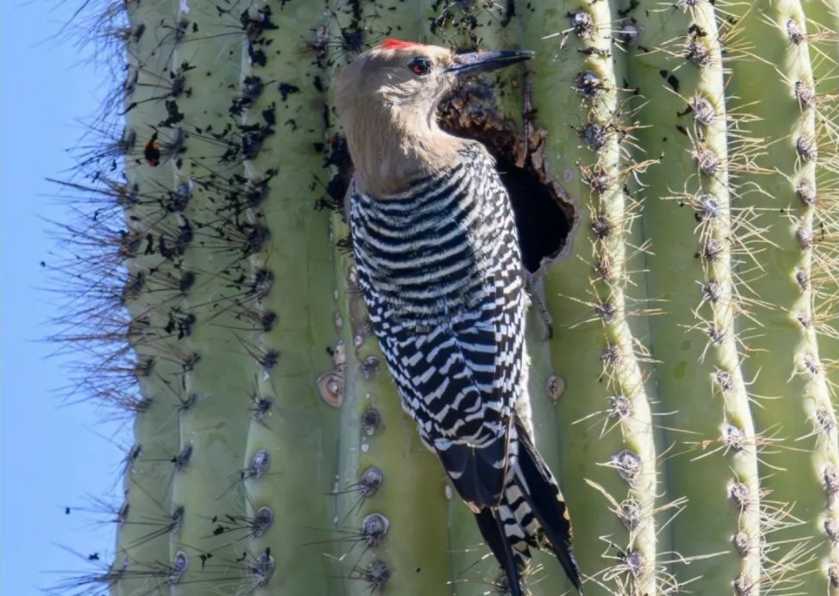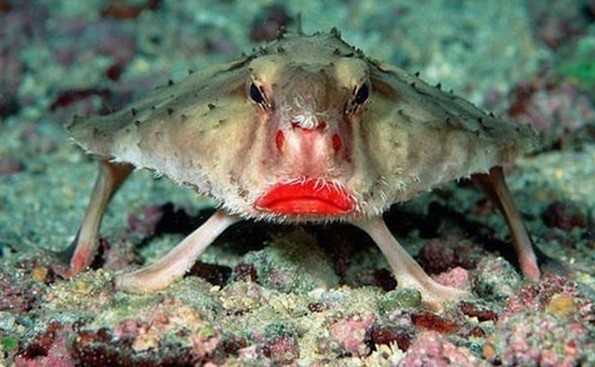Search for information
Gila Woodpecker: The Desert's Masterful CraftsmanThe Gila woodpecker, Melanerpes uropygialis, is a remarkable avian species well - adapted to the arid landscapes of the southwestern United States and northwestern Mexico. Sporting a distinctive black - and - white checkered back, a red patch on the male's crown, and a sturdy, chisel - like bill, this woodpecker stands out as a true icon of the desert ecosystem.
June 9, 2025, 4:49 pm EDT


Classic Culinary Treasures of Britain and Ireland: A Gastronomic Journey Through Time
Is there any food more emblematic of British and Irish cuisine than Fish and Chips? This beloved dish involves coating cod in a light flour batter and gently frying it until golden and crispy. Served alongside a generous portion of chips, it is typically accompanied by a choice of creamy mayonnaise or tangy ketchup.more

The Red-Lipped Batfish: Galápagos’ Quirky Underwater Celebrity with a Pouty Predatory Style
Native to the coastal waters of the Galápagos Islands and Peru, the red-lipped batfish (Ogcocephalus darwini) has become an internet sensation for its most striking feature—bright red, pouty lips that contrast vividly with its grayish-brown body. This unusual fish, adapted for life on the ocean floor, trades swimming for "walking" using modified pectoral fins, making it a fascinating example of evolutionary specialization.more

"Daredevil: Born Again" Season 2 Set to Premiere in March 2026
"Daredevil: Born Again" Season 2 Set to Premiere in March 2026more

A great collection of the world's ethnic beauties! (4)
A great collection of the world's ethnic beauties! (4)more

Porsche 911 GT3 (996): The Catalyst for Modern 911 Racing Heritage
At the turn of the millennium, Porsche faced a pivotal challenge: creating a homologated road car to underpin an all - new 911 racing lineage for the 996 generation. The result was the 911 GT3 (996), a revolutionary model that not only served as the brand’s first ground - up 911 redesign since the 1960s but also redefined the intersection of track - ready performance and street - legal practicality.more

Cozy Dutch Winter Delights: Three Heartwarming Dishes to Warm Your Soul
As the chill of winter settles over the Netherlands, few things offer comfort like the country’s cherished traditional dishes. Slow-cooked, aromatic, and rich with flavor, these meals are more than just food—they’re a warm embrace on a frosty day. Here’s a closer look at three iconic Dutch winter specialties that have been warming hearts and bellies for generations.more

The Siberian Cat: Russia’s Majestic Forest Feline with a Royal Heritage
Native to the harsh wilderness of Siberia, the Siberian cat has roamed Russia’s forests for centuries, evolving a thick, water - repellent coat and robust build to survive frigid climates. This ancient breed, often called the "national cat of Russia," blends wild resilience with a gentle demeanor, captivating cat lovers worldwide.more

Scientists Unveil Ultra - Precise 3D Tumor Cell Maps and 'Molecular Clocks'
On October 30, in 12 papers published in Nature, researchers from the Human Tumor Atlas Network (HTAN) have created ultra - precise 3D maps of tumor cells by analyzing hundreds of thousands of cells from human and animal tissues. They also developed a “molecular clock” capable of tracking the cellular changes that lead to cancer.more

